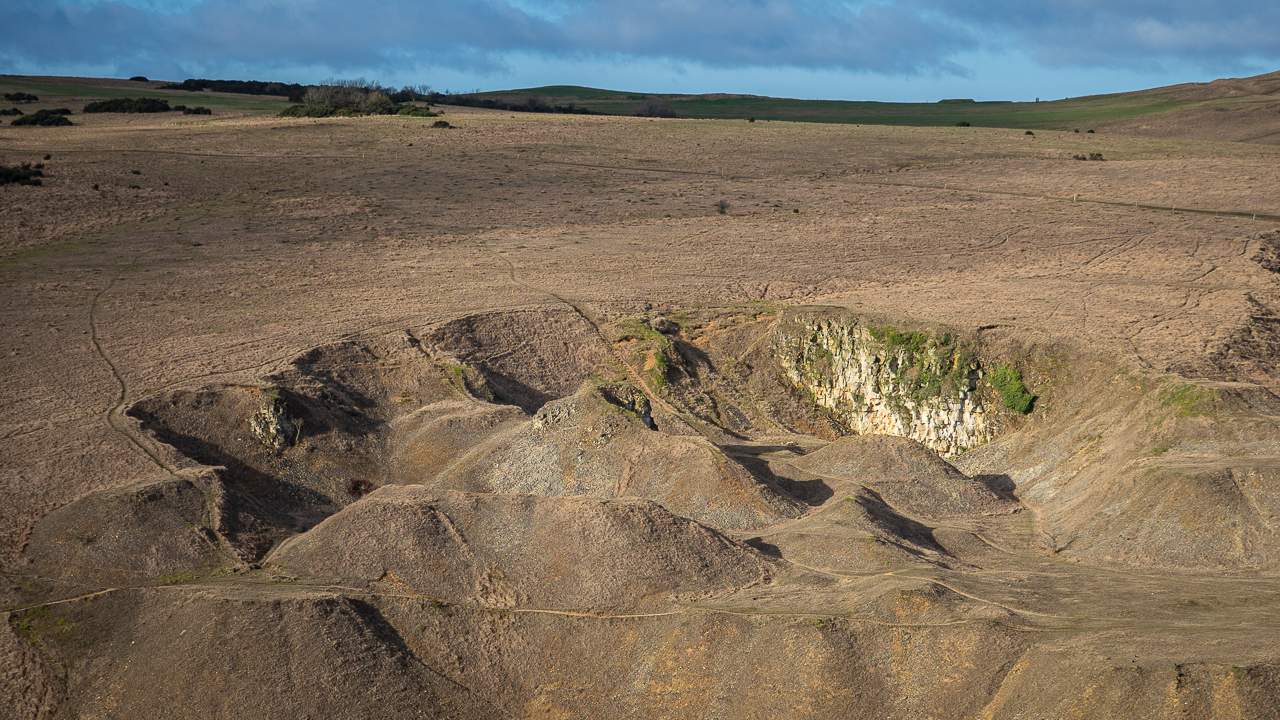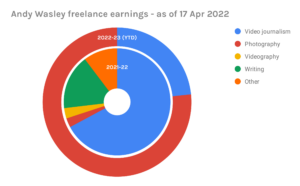17 Apr Cotswold stone on Cleeve Hill – a childhood memory

I’ve been spending a lot of time thinking about my childhood lately, and particularly about Cleeve Hill – it’s where I grew up, and it’s what gave me my love of hills and nature and wild things. As part of my MA in Nature and Travel Writing I’ve also been writing about it. Here’s an episode from my early years that continues to echo through my life, particularly when I’m hiking.
Cotswold Stone
Standing on tiptoe, I could see it from my bedroom window, looming above the large bush at the back of our little garden: a long deep-green bulk—a mountain, to my eyes—topped with stone cliffs that glowed the colour of buttercups when the sun set.
Cleeve Hill. It must have been there for ever.
Dad took me there often. From the hilltop I could see the whole world: the wide, flat Severn Valley stretching out to the Malverns, vast, quiet and unchanging.

Once, we explored a deep, shadowy quarry cut into a cliff overlooking the valley. The quarry’s bare face gashed deep into the hillside, exposing towering layers of Cotswold stone. I noticed how small Dad looked, shadowed by the scar. He scanned the sheep-cropped turf at the base of the cliff, started forward, and stopped by a small heap of limestone rubble, half grown over with briars.
He picked up a lump of stone—pale yellow and crumbling like stale cake— cracked gritty pieces from it, and handed one to me. It smelled clean and faintly bitter.
“Look closely,” he said.
I stared at the stone. A stone. Just a stone.
“Really closely.”
I peered closer. The stone resolved itself into countless tiny dots, glued together. “Can you see the shells?”
I turned the stone over and peered again, straining my eyes, and saw them: shells, for sure—very small, pitted and cracked. Mouth open, my head full of stone-smell and wonder, I looked up at Dad and nodded.
“You might not believe it,” he said, “but all of this”—he swept his arms around, gathering in the quarry and the wide valley—“all of this used to be under a sea, millions and millions of years ago, when there were still dinosaurs. Cleeve Hill was made by tiny shells building up at the bottom of that sea. That’s what you have in your hand. Try to imagine how long that took.”
I couldn’t imagine it. Even today, I struggle to comprehend it: billions of lives lived millions of years ago. But there I stood, cradling traces of an ancient sea in my small hand. That was my father’s gift to me: wonder beyond the power of imagination, sparked by a crumbling stone suffused with the bitter scent of deep time.
Keeping my promises
Every couple of weeks I’ll continue to post an update on my progress with five promises I’ve set for myself.
 Book – promise kept. I’m aiming to write 60,000 words by the end of August, and have set myself a goal of writing at least 3,500 words a week to meet this goal comfortably. (This allows me a few weeks off.) In the two weeks since my last post, I wrote 8,100 words.
Book – promise kept. I’m aiming to write 60,000 words by the end of August, and have set myself a goal of writing at least 3,500 words a week to meet this goal comfortably. (This allows me a few weeks off.) In the two weeks since my last post, I wrote 8,100 words.- Nature photography – promise kept. I had a fairly slack week from 4 April, but managed to head out for some butterfly photography – including a marvellous orange-tip, whose ventral wing surface looked practically fluorescent. You can see him below.
- Rebalance my earnings. The chart opposite shows how I’m getting on with shifting my focus from video journalism to writing and photography. There are very few data points in my books at the moment so although this looks like I’ve made an impressive advance on earnings from photography, I promise I haven’t earnt that much (yet), and I don’t expect this ratio to last. Next month’s earnings look slack at the moment. I’m trying to look at that as an opportunity to cram in some writing work – but that’s a big challenge with a house move still likely, and while I’m struggling a bit with creativity.
- Blogging – promise kept. Well, here we are! I feel a little lazy – this Cleeve Hill story has been knocking around for a while – but a win’s a win.
- Cape Wrath Trail. I have had one pitch accepted for a feature about this hike – let’s call that a commission, shall we? The great thing with this is that it means I can start to look at how to mine the experience for other angles for different titles.
What I’ve been reading
One of the great things about my MA is that it encourages me – well, practically forces me – to read a lot more, and a lot more widely, than I did before I started. Here are a few things that I’ve taken to my reading chair over the last couple of weeks:
- The hedgehog aficionado and campaigner Hugh Warwick gave my course a seminar on nature writing, and I picked up a copy of his Linescapes – a fascinating and engaging book looking at the way human lines (roads, hedgerows, power lines, and so on) serve both to connect and fragment habitats. The book also looks at the social history behind many of the prominent features in the landscape (“we need to recognise that they are of us, and that to ignore their social history is to remain blind to their significance today”). My South Downs Way hike took in several former villages that were wiped out by enclosures, and it’s been eye-opening to learn more about that upsetting stage in English history through Hugh’s book.
- ‘Father Time’, an essay by David Sedaris, crosses between memoir and nature as he looks at his relationship with his father, loggerhead turtles, and being mistaken for David Chapelle. Typically marvellous.
- David Russell argues we should put more time into learning about landscapes than photographing them – and that the only way to do this is to invest time into really knowing a place. A good lesson in patience and vision.
Here’s that orange-tip. Thank you for reading – it does help me to focus on living up to my promises.



No Comments